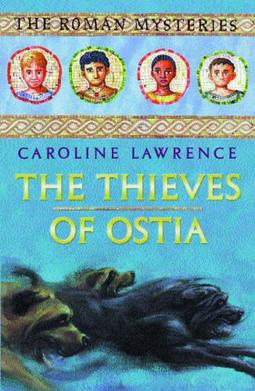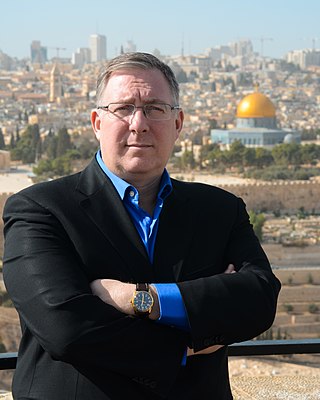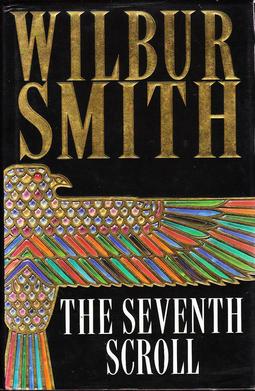
The Dead Sea Scrolls, also called the Qumran Caves Scrolls, are a set of ancient Jewish manuscripts from the Second Temple period. They were discovered over a period of 10 years, between 1946 and 1956, at the Qumran Caves near Ein Feshkha in the West Bank, on the northern shore of the Dead Sea. Dating from the 3rd century BCE to the 1st century CE, the Dead Sea Scrolls include the oldest surviving manuscripts of entire books later included in the biblical canons, including deuterocanonical manuscripts from late Second Temple Judaism and extrabiblical books. At the same time, they cast new light on the emergence of Christianity and of Rabbinic Judaism. Almost all of the 15,000 scrolls and scroll fragments are held in the Shrine of the Book at the Israel Museum located in Jerusalem. The Israeli government's custody of the Dead Sea Scrolls is disputed by Jordan and the Palestinian Authority on territorial, legal, and humanitarian grounds—they were mostly discovered following the Jordanian annexation of the West Bank and were acquired by Israel after Jordan lost the 1967 Arab–Israeli War—whilst Israel's claims are primarily based on historical and religious grounds, given their significance in Jewish history and in the heritage of Judaism.

Mary Doria Russell is an American novelist.

Vikram Seth is an Indian novelist and poet. He has written several novels and poetry books. He has won several awards such as Padma Shri, Sahitya Akademi Award, Pravasi Bharatiya Samman, WH Smith Literary Award and Crossword Book Award. Seth's collections of poetry such as Mappings and Beastly Tales are notable contributions to the Indian English language poetry canon.

E pluribus unum – Latin for "Out of many, one" – is a traditional motto of the United States, appearing on the Great Seal along with Annuit cœptis and Novus ordo seclorum which appear on the reverse of the Great Seal; its inclusion on the seal was suggested by Pierre Eugene du Simitiere and approved in an act of the Congress of the Confederation in 1782. While its status as national motto was for many years unofficial, E pluribus unum was still considered the de facto motto of the United States from its early history. Eventually, the U.S. Congress passed an act in 1956, adopting "In God We Trust" as the official motto.

Pesher, from the Hebrew root meaning "interpretation," is a group of interpretive commentaries on scripture. The pesharim commentaries became known from the discovery of the Dead Sea Scrolls. The pesharim give a theory of scriptural interpretation of a number of biblical texts from the Hebrew Bible, such as Habakkuk and Psalms.

The Roman Mysteries is a series of historical novels for children by Caroline Lawrence. The first book, The Thieves of Ostia, was published in 2001, finishing with The Man from Pomegranate Street, published in 2009, and totaling 17 novels, plus a number of "mini-mysteries", spinoffs, and companion titles.

The Copper Scroll (3Q15) is one of the Dead Sea Scrolls found in Cave 3 near Khirbet Qumran, but differs significantly from the others. Whereas the other scrolls are written on parchment or papyrus, this scroll is written on metal: copper mixed with about 1 percent tin, although no metallic copper remained in the strips; the action of the centuries had been to convert the metal into brittle oxide. The so-called 'scrolls' of copper were, in reality, two separated sections of what was originally a single scroll about 2.4 metres (7.9 ft) in length. Unlike the others, it is not a literary work, but a list of 64 places where various items of gold and silver were buried or hidden. It differs from the other scrolls in its Hebrew, its orthography, palaeography and date.

John Marco Allegro was an English archaeologist and Dead Sea Scrolls scholar. He was a populariser of the Dead Sea Scrolls through his books and radio broadcasts. He was the editor of some of the most famous and controversial scrolls published, the pesharim. A number of Allegro's later books, including The Sacred Mushroom and the Cross, brought him both popular fame and notoriety, and also complicated his career.

Joel C. Rosenberg is an American-Israeli Christian evangelical, communications strategist, author, and non-profit executive. He has written sixteen novels about terrorism and Bible prophecy, including the Gold Medallion Book Award-winner The Ezekiel Option. He also has written three nonfiction books, Epicenter, Inside the Revolution, and Enemies and Allies.
Richard Harris Leigh was a novelist and short story writer born in New Jersey, United States to a British father and an American mother, who spent most of his life in the UK. Leigh earned a BA from Tufts University, a master's degree from the University of Chicago, and a PhD from the State University of New York at Stony Brook.

A treasure map is a map that marks the location of buried treasure, a lost mine, a valuable secret or a hidden locale. More common in fiction than in reality, "pirate treasure maps" are often depicted in works of fiction as hand drawn and containing arcane clues for the characters to follow. Regardless of the term's literary use, anything that meets the broad definition of a "map" that describes the location of a "treasure" could appropriately be called a "treasure map."
Shemen afarsimon was a prized oil used in antiquity. The ancient Jewish community of Ein Gedi was known for its cultivation of the afarsimon.

The House of the Wolf is a Gothic horror novel by author Basil Copper. It was published by Arkham House in 1983 in an edition of 3,578 copies. It was the author's fourth book published by Arkham House. The book contains a number of interior black and white illustrations by Stephen E. Fabian.

Sharon Mills Draper is an American children's writer, professional educator, and the 1997 National Teacher of the Year. She is a two-time winner of the Coretta Scott King Award for books about the young and adolescent African-American experience. She is known for her Hazelwood and Jericho series, Copper Sun,Double Dutch, Out of My Mind and Romiette and Julio.

The Jesus Scroll is a best-selling book first published in 1972 and written by Australian author Donovan Joyce. A forerunner to some of the ideas later investigated in The Da Vinci Code, Joyce's book made the claim that Jesus of Nazareth may have actually died aged 80 at Masada near the Dead Sea, site of the last stand made by Jewish zealot rebels against the Roman Empire, after the Fall of Jerusalem and the destruction of the Second Temple.

The Seventh Scroll is a novel by author Wilbur Smith, first published in 1995. It is part of the 'Egyptian' series of novels by Smith and follows the exploits of the adventurer Nicholas Quenton-Harper and Dr. Royan Al Simma. The tomb of Tanus, which is the focus of the book, refers to another novel by the author, River God.

Copper Sun is a 2006 young adult novel by Coretta Scott King Award-winning author Sharon Draper.

Hanan Eshel was an Israeli archaeologist and historian, well known in the field of Dead Sea Scrolls studies, although he did research in the Hasmonean and Bar Kokhba periods as well. With Magen Broshi he discovered a number of residential caves in the near vicinity of Qumran and co-published a number of historically significant documents from Qumran.

Children of Blood and Bone is a 2018 young adult romantic fantasy novel by Nigerian-American novelist Tomi Adeyemi. The book, Adeyemi's debut novel and the first in a planned trilogy, follows heroine Zélie Adebola as she attempts to restore magic to the kingdom of Orïsha, following the ruling class kosidáns' brutal suppression of the class of magic practitioners Zélie belongs to, the maji.

Song of the Soil is a 2019 Nepali novel by Chuden Kabimo. The novel is based on the Gorkhaland movement revolution that took place during 1980s in the northern part of West Bengal. The Nepali edition of the novel was initially published in 2019 by FinePrint Publication in Nepal and Sambodhan Publication in India.


















